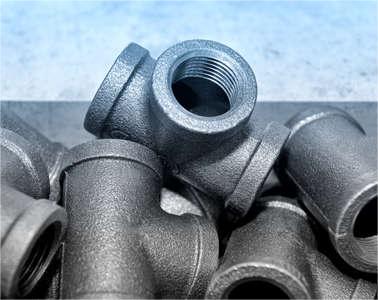Pipe fittings are essential components in both residential and industrial piping systems. These small but crucial parts can be made from various materials such as steel, cast iron, brass alloys, or metal-plastic combinations. While they might differ in diameter from the main pipe, it’s crucial that they are made from compatible materials to ensure proper function.
Pipe fittings serve different purposes, depending on the installation requirements. When installed correctly, they help ensure a secure and tight connection for ground, underground, and even underwater pipelines.
Purpose and Function
The main functions of pipe fittings include:
- • Changing Pipe Direction: Pipe fittings can turn pipes at specific angles, allowing for flexibility in the piping layout.
- • Branching Off: Certain fittings create branches in a pipeline, enabling the addition of new connections.
- • Connecting Different Diameters: Adapters and reducers allow pipes of varying sizes to connect seamlessly.
These purposes are served by various fittings like elbows, tees, adapters, plugs, and crosses.
Connection Methods
How pipe fittings connect to the main pipeline is also critical. The most common connection methods are:
- • Threaded Fittings: These are practical and versatile, allowing quick installation and removal. They are ideal for sections that might require future disassembly.
- • Compression Fittings: These are affordable and easy to use, but they require periodic maintenance to ensure tight connections.
- • Welded Fittings: These offer the most airtight connections but require specialized welding equipment for installation. Although these are reliable, they can be more challenging to install and replace.
Types of Pipe Fittings
Pipe fittings come in various classes and shapes. Here’s a breakdown of some common types:
- • Straight Fittings: These connect pipes of the same diameter, ensuring linear installations.
- • Couplings: Used to connect pipes of different diameters, ensuring a smooth transition.
- • Angle Fittings: These include elbows that allow pipes to turn at different angles, typically ranging from 15 to 90 degrees. If different diameters are involved, additional adapters are used.
- • Tees and Crosses: These fittings allow for multiple pipes to connect at once, with tees joining three pipes and crosses joining four. The connections are usually at 45 or 90 degrees.
When choosing pipe fittings, it’s essential to consider the material, diameter, and specific purpose of each fitting. By understanding these factors, you can ensure a secure and efficient piping system.
Post time: Apr-23-2024




